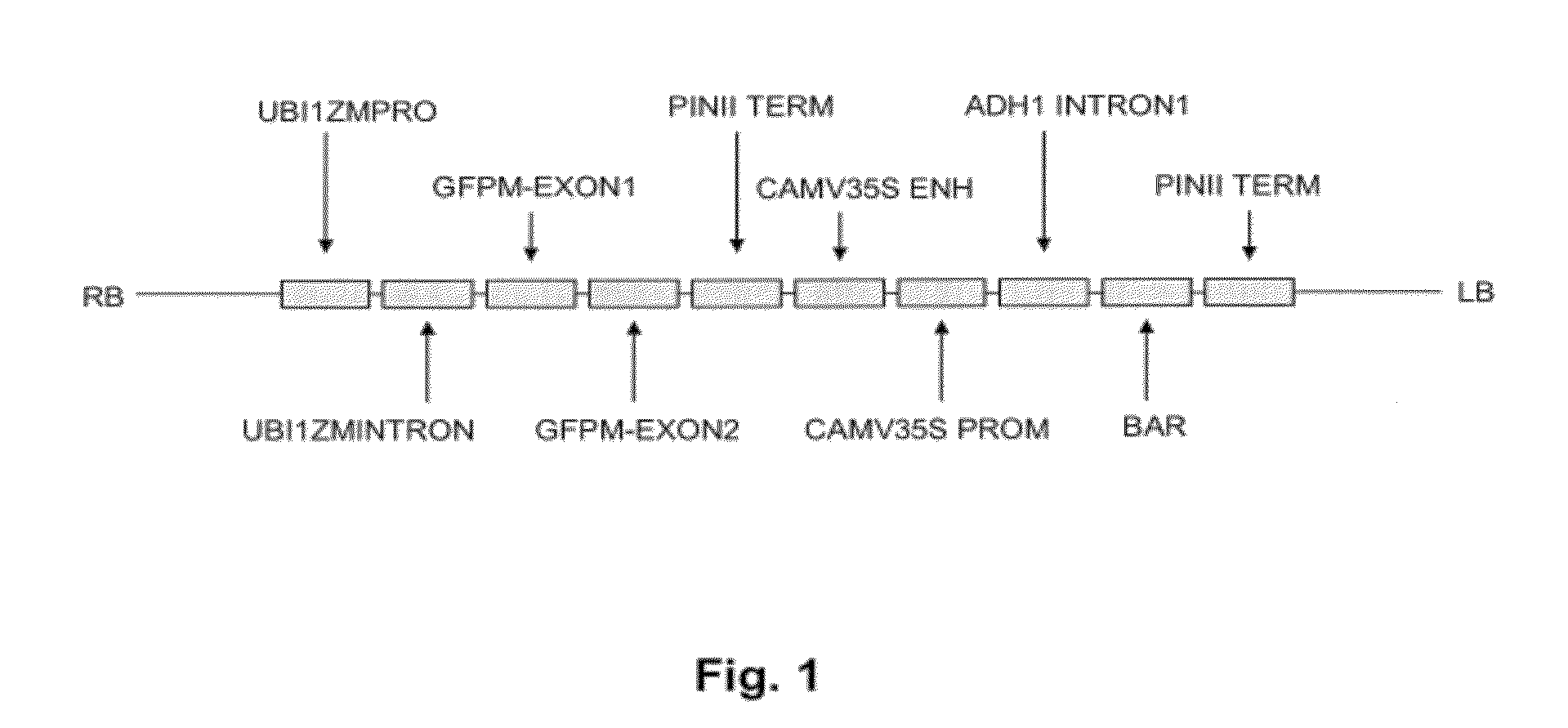Method for regulating agrobacterium-mediated transformation
a technology of agrobacterium and transformation, applied in the field of regulating agrobacterium-mediated transformation, can solve the problems of ineffective addition of acetosyringone, ineffective vir gene in i, and ineffective effect of acetosyringone alon
- Summary
- Abstract
- Description
- Claims
- Application Information
AI Technical Summary
Benefits of technology
Problems solved by technology
Method used
Image
Examples
examples
Plant Materials and Media Compositions
[0040]The sorghum public line, P898012 (originally supplied to Pioneer Hi-Bred International-USA by Dr. John Axtell, Purdue University; see Zhao et al., 2000) and the maize genotype denoted GS3 (developed by Pioneer Hi-Bred International-USA) were used for the isolation of immature zygotic embryos at 9-14 days after pollination. The two genotypes were grown in Pioneer greenhouses primarily as described in Zhao et al., 2000. Sterilization of sorghum panicles and corn ears was carried out with 50% Chlorox Bleech (3.075% (v / v) sodium hypochlorite) and 0.1% (v / v) Tween 20 for 20 minutes and then rinsed three times with sterile distilled water. This sterilization procedure was repeated with 10% Chlorox bleech (0.615% (v / v) sodium hypochlorite). Immature zygotic embryos ranging in size from 0.8 mm-1.8 mm were isolated and treated as indicated in the transformation procedures outlined below. The compositions of various media used in this study are outl...
PUM
| Property | Measurement | Unit |
|---|---|---|
| concentrations | aaaaa | aaaaa |
| v/v | aaaaa | aaaaa |
| v/v | aaaaa | aaaaa |
Abstract
Description
Claims
Application Information
 Login to View More
Login to View More - R&D
- Intellectual Property
- Life Sciences
- Materials
- Tech Scout
- Unparalleled Data Quality
- Higher Quality Content
- 60% Fewer Hallucinations
Browse by: Latest US Patents, China's latest patents, Technical Efficacy Thesaurus, Application Domain, Technology Topic, Popular Technical Reports.
© 2025 PatSnap. All rights reserved.Legal|Privacy policy|Modern Slavery Act Transparency Statement|Sitemap|About US| Contact US: help@patsnap.com



